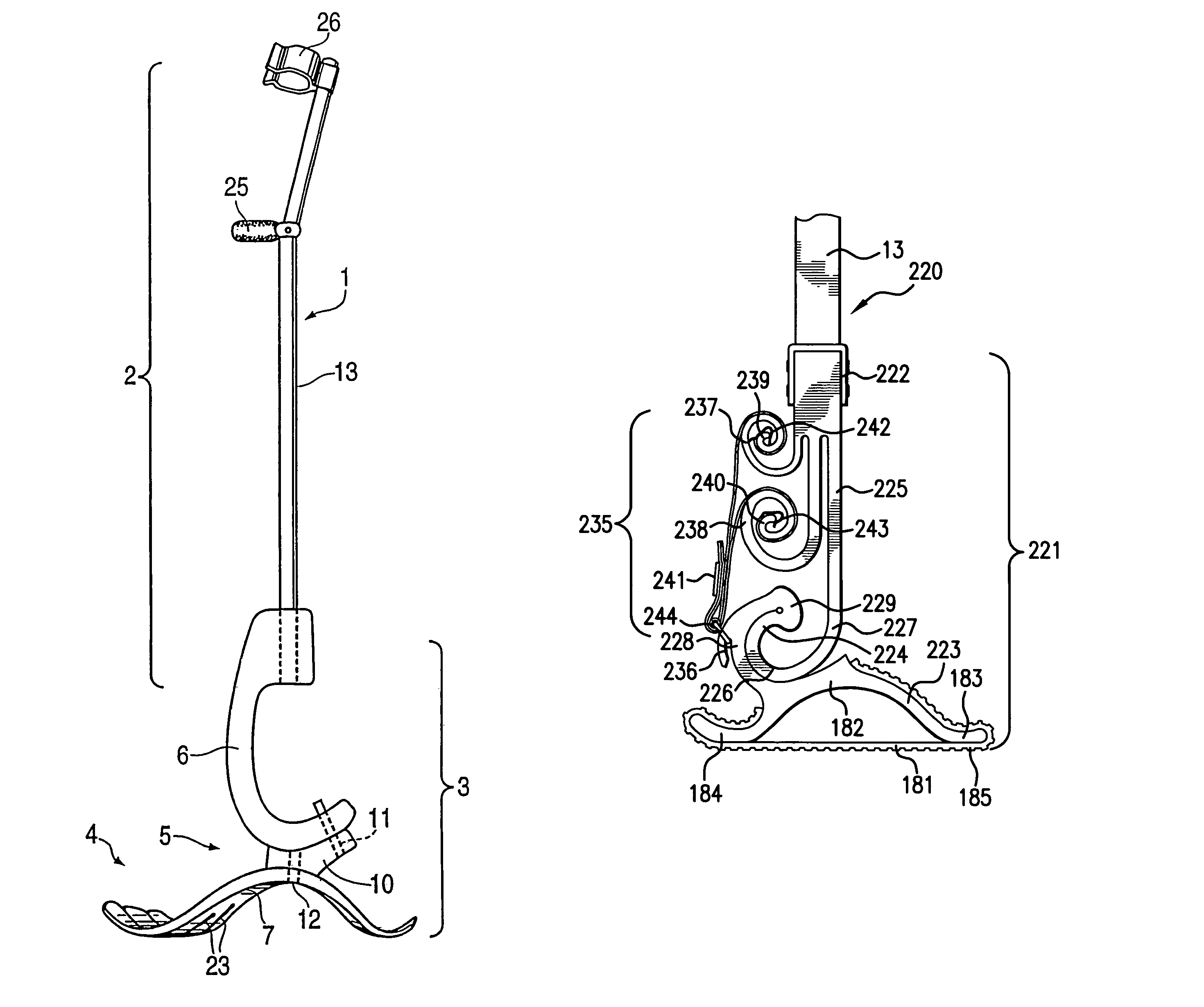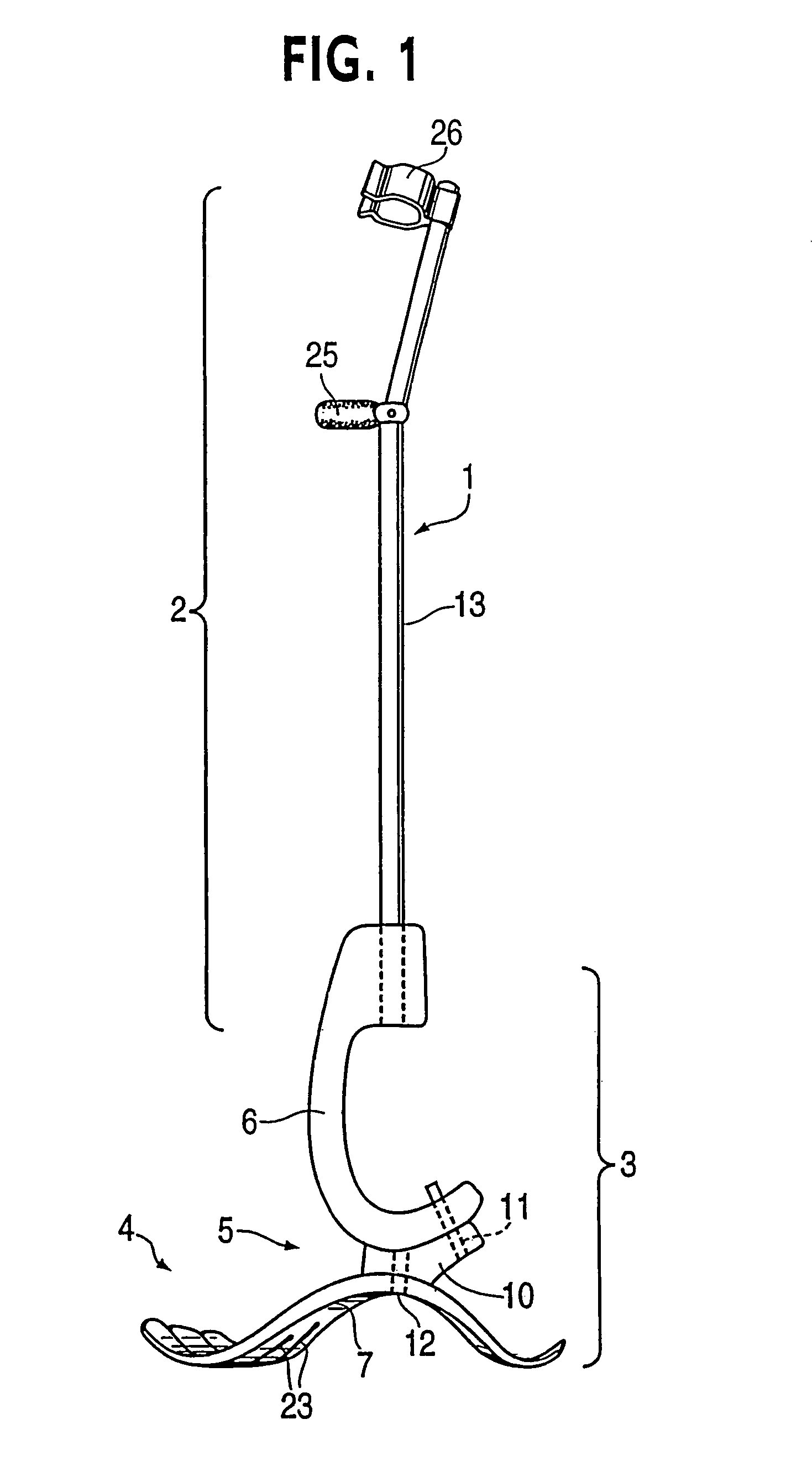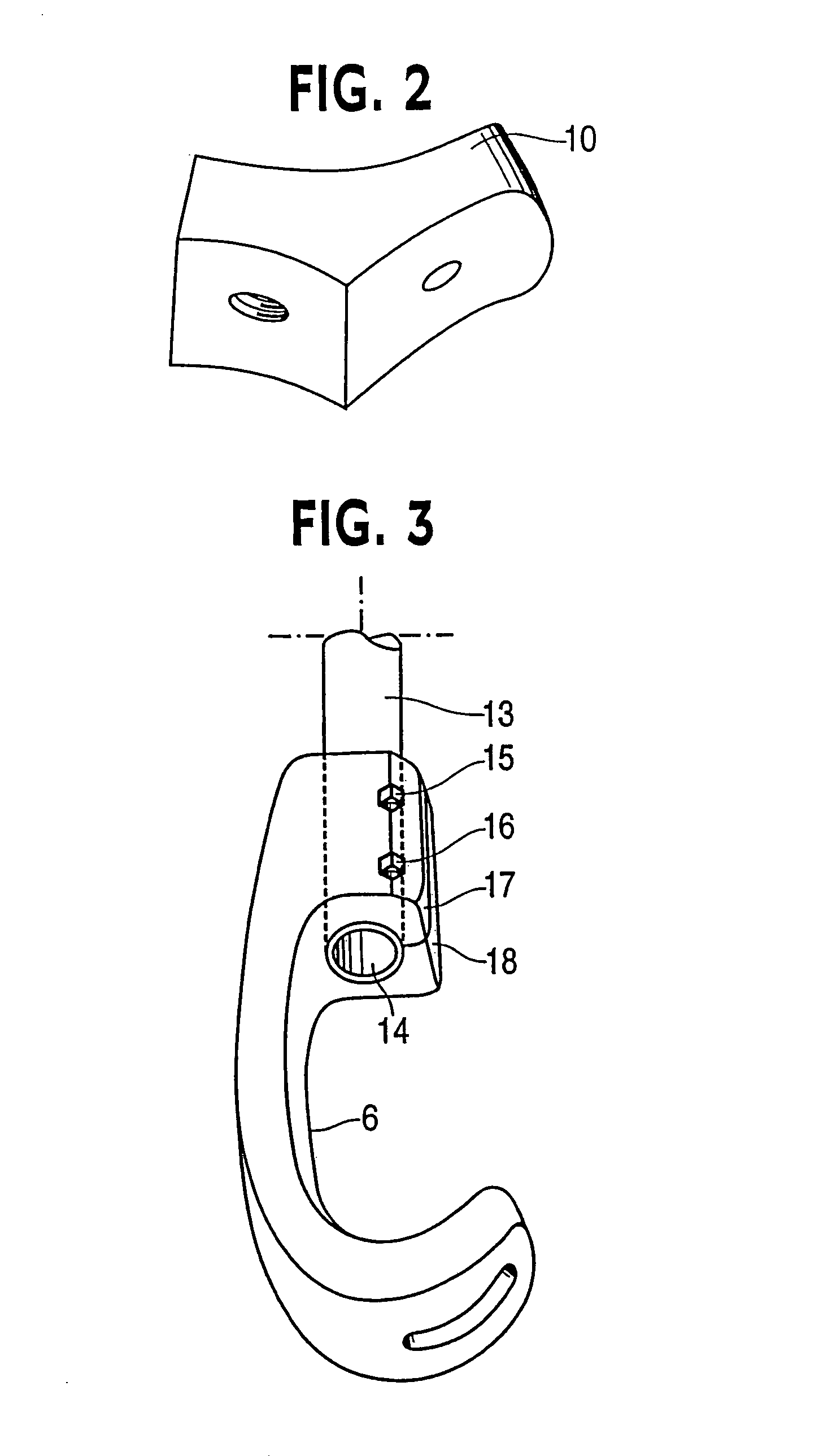Mobility assistance apparatus
a technology of mobility assistance and equipment, applied in the field of mobility assistance equipment, can solve the problems of user's body, excessive amount of energy needed to stabilize the walking system, and many of the same functional limitations of the modern ambulatory aid, and achieve the effects of improving the mobility of a person, high function, and low cos
- Summary
- Abstract
- Description
- Claims
- Application Information
AI Technical Summary
Benefits of technology
Problems solved by technology
Method used
Image
Examples
Embodiment Construction
[0047]Referring now to FIGS. 1-3 of the drawings, a mobility assistance apparatus 1 according to a first embodiment is formed of a walking aid 2 in the form of a forearm crutch and a device 3 connected to a lower portion of the walking aid for ground engagement. The device 3 has a dynamic response characteristic to forces associated with ambulating using the walking aid which generates forward propulsion to aid mobility. The device 3 in the embodiment is a resilient lower extremity prosthesis, e.g. a prosthetic foot, which stores energy during force loading and releases stored energy during force unloading to generate propulsive force. In the example embodiment the device 3 is a prosthesis according to commonly owned U.S. Pat. No. 6,562,075.
[0048]The prosthesis 3 includes a resilient foot 4, ankle 5 and calf shank 6. The foot 4 includes a foot keel 7 and optionally a protective covering not shown in FIG. 1 but like covering 8 shown in outline in FIG. 4, for example. The covering 8, ...
PUM
 Login to View More
Login to View More Abstract
Description
Claims
Application Information
 Login to View More
Login to View More - R&D
- Intellectual Property
- Life Sciences
- Materials
- Tech Scout
- Unparalleled Data Quality
- Higher Quality Content
- 60% Fewer Hallucinations
Browse by: Latest US Patents, China's latest patents, Technical Efficacy Thesaurus, Application Domain, Technology Topic, Popular Technical Reports.
© 2025 PatSnap. All rights reserved.Legal|Privacy policy|Modern Slavery Act Transparency Statement|Sitemap|About US| Contact US: help@patsnap.com



